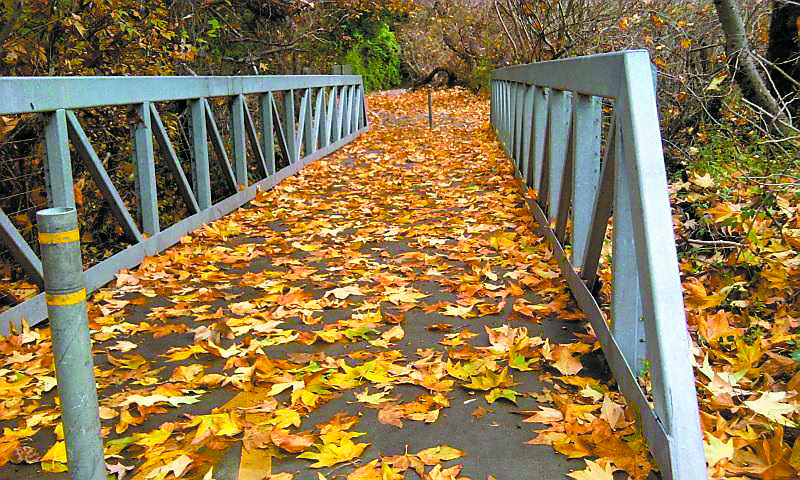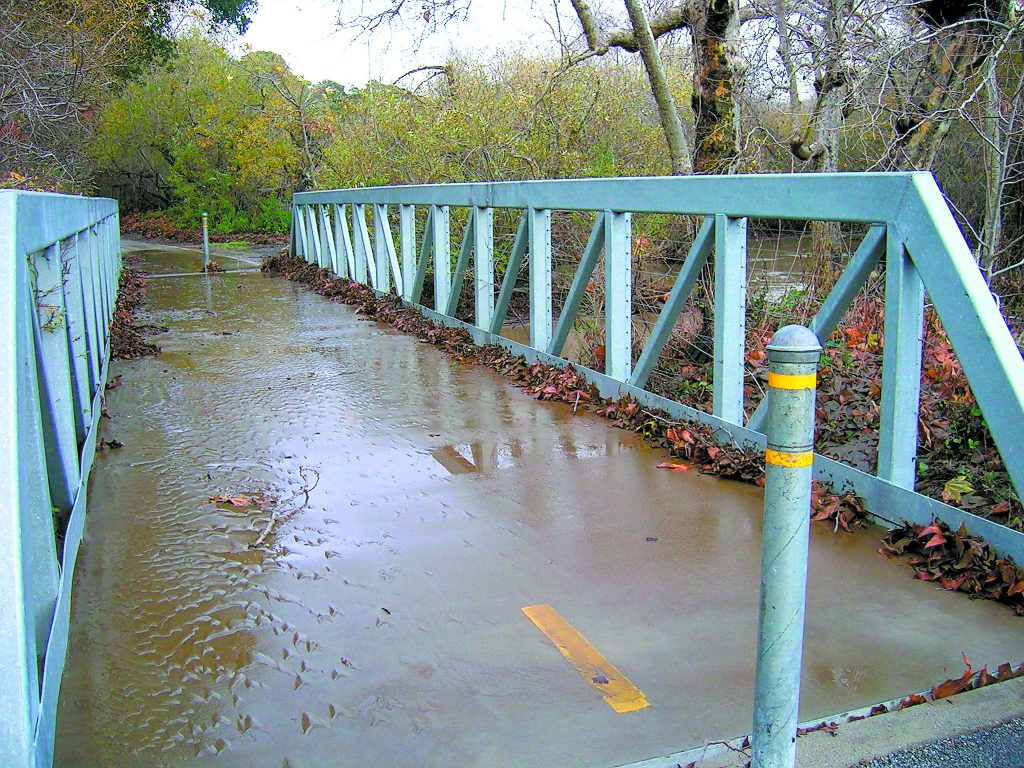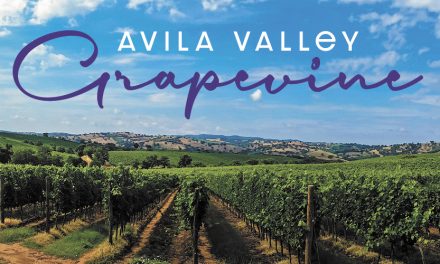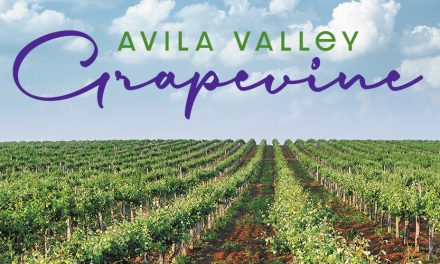By Betty Hartig
Fall is an invigorating time to go for a hike or bike ride. The crisp morning air and colorful foliage create an enjoyable experience.
It is the perfect time to venture onto Avila’s Bob Jones Trail. As you begin your jaunt from Ontario Road, you will follow the meandering San Luis Obispo Creek. Ahh, the sound of the water flowing by your side and chirping birds can be refreshing.
At the ¾ mile mark of your travel, you will cross a footbridge that goes over a small creek. That is See Canyon Creek, the last of 6 tributaries that merge into San Luis Obispo Creek before heading out to the Pacific Ocean. That little creek plays an important part in the history of the area.
Where does this creek come from? What role has it played in the region?
In the early days, the creek was referred to as the San Miguelito Creek. As time passed, the name See Canyon Creek was adopted after the pioneer See family. In 1860 Joseph See and his family settled in San Luis Obispo County and acquired acreage. The family farmed the fertile valley for many years. Currently, the territory is known for its fabulous apple-growing orchards and wine grape vineyards.
There is a legend that the See family is related to the famous See’s Candies family. Could it possibly be that tasty chocolate candy was being developed somewhere upstream? Alas, that is just a sweet myth.
See Canyon Creek is a 4.5-mile perennial stream. The tributary originates in the south-western zone of the Irish Hills range from about the 540-foot elevation. The level of the creek can be either feast or famine. Some rainy years the stream flows over its banks. In a period of heavy rainfall, the watercourse has even flown over the Bob Jones Trail. However, during the summer months, it is often dry, eagerly waiting for the rains to moisten the pathway of the most downstream tributary in the San Luis Obispo Creek Watershed. Even though it dries to a trickle and appears that no water exists, there are still pools of water that remain. These pools support aquatic life.
In 2004 there was a fish count study of 25 pools. Despite the dry upper and lower channels, slightly more than one thousand fry, which refers to recently hatched fish, and about four hundred juvenile steelhead trout were counted. It is important to realize that when the creek runs dry, it is not just because of a lack of rainfall. Severe groundwater pumping is a major cause for the loss of water flow. The lower creek sector is predominately influenced by farming and rural residential development. The upper watershed consists of steep wooded hillsides and grasslands.
See, Canyon Creek sustains abundant wildlife in the area. Numerous species frequent the creek for food and water. It is vital and well used by returning fish. The creek supports more birds than any other habitat type in California, creating an ideal environment for residential and migratory bird species.
The large trees in the region provide nesting for a variety of hawks and herons. The dead trees in the locale are a crucial home for residing birds.
Mammals, amphibians, fish, and invertebrates all flourish in the See Canyon Creek corridor. Tree frogs, weasels, and crayfish are just a few of many established inhabitants. There is a list of special status animal species, which includes the Southwestern pond turtle, spotted owl, two striped garter snake, and Southern steelhead trout that are listed as endangered or threatened.
Keeping See Canyon Creek healthy can be a great benefit for the environment and our local community.
Some of the most significant concerns for the creek are fish passage, Arundo invasive grass, oversubscription of water, and bank stabilization. As you are enjoying your walk or ride along the Bob Jones Pathway, perhaps pause on the bridge and take time to reflect on this creek and its importance to the ecosystem.
See Canyon Creek footbridge is part of Avila’s Bob Jones Trail. Photo courtesy of Betty Hartig








